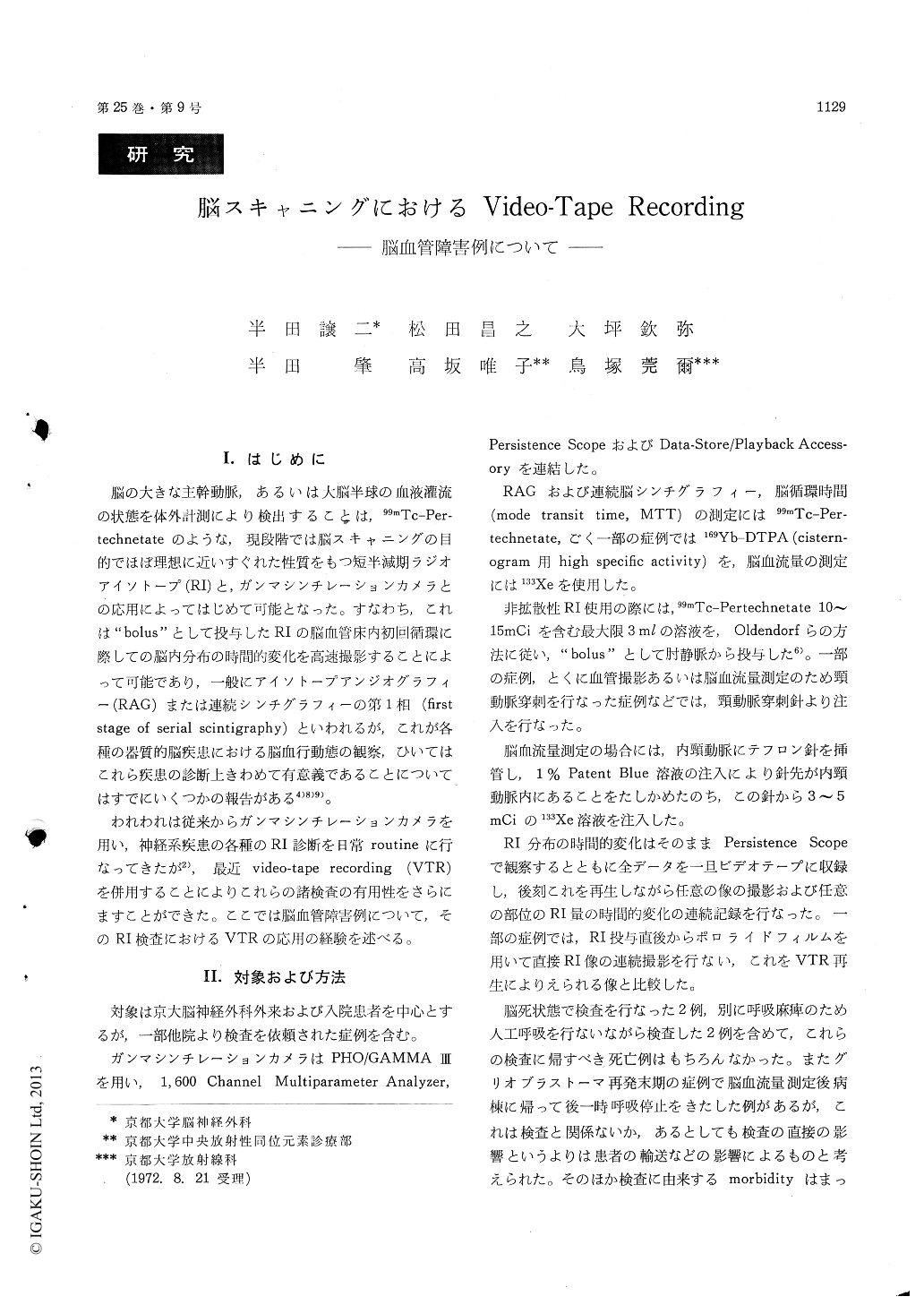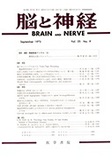Japanese
English
- 有料閲覧
- Abstract 文献概要
- 1ページ目 Look Inside
I.はじめに
脳の大きな主幹動脈,あるいは大脳半球の血液灌流の状態を体外計測により検出することは,99mTC-Per—technetateのような,現段階では脳スキャニングの目的でほぼ理想に近いすぐれた性質をもつ短半減期ラジオアイソトープ(RI)と,ガンマシンチレーションカメラとの応用によってはじめて可能となった。すなわち,これは"bolus"として投与したRIの脳血管床内初回循環に際しての脳内分布の時間的変化を高速撮影することによって可能であり,一般にアイソトープアンジオグラフィー(RAG)または連続シンチグラフィーの第1相(first stage of serial scintigraphy)といわれるが,これが各種の器質的脳疾患における脳血行動態の観察,ひいてはこれら疾患の診断上きわめて有意義であることについてはすでにいくつかの報告がある4)8)9)。
われわれは従来からガンマシンチレーションカメラを用い,神経系疾患の各種のRI診断を日常routineに行なってきたが2),最近video-tape recording (VTR)を併用することによりこれらの諸検査の有用性をさらにますことができた。ここでは脳血管障害例について,そのRI検査におけるVTRの応用の経験を述べる。
1. Videotape recording system was introduced in radioisotope cerebral anglography with 99mTc pertechnetate and in 133Xe cerebral scintigraphy. Time-activity data were fed into a 1-inch wide vi-deotape and displayed later on the oscilloscope for detailed study and eventual photographic recording.
2. The method proved to be of extreme value for (1) improving the detection rate, especially of the small pathologic foci, (2) decreasing the error of instrument setting which is often inevitable with direct photographic recording method, and (3) cutting down the patient's expense for exami-nation.
3. By use of pen-writing recorder, videotape recording method provided the time-activity curves and the regional cerebral blood flow, cerebral vas-cular bed, and cerebral transit time could be cal-culated for multiple regions of interest. In cere-brovascular disorders, those data of regional cir-culation apparently were of great value for clinical as well as research purposes, particularly in combi-nation with the visual images of radiosotope angi-ogram and 133Xe cerebral scintigram.

Copyright © 1973, Igaku-Shoin Ltd. All rights reserved.


